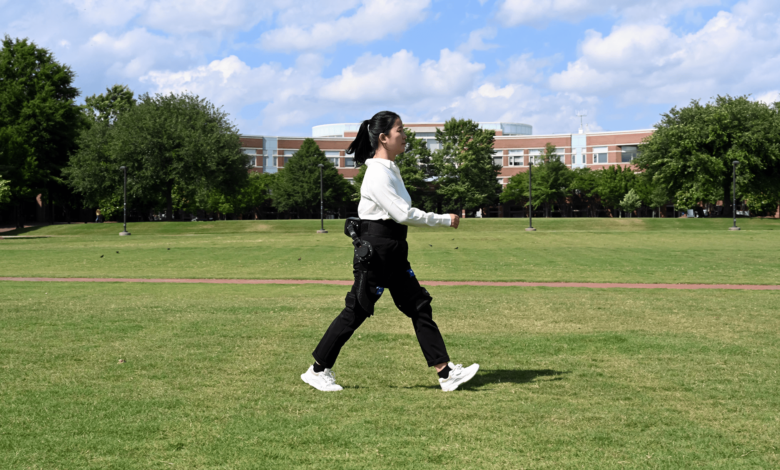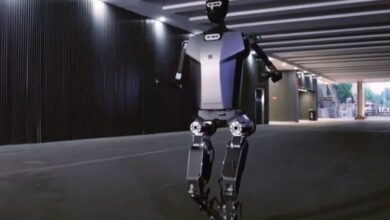Can an AI trainer help bring robotic exoskeletons to the masses?

Exoskeletons have long been touted as futuristic game-changers for human mobility. Beyond Iron Man and other superhero shenanigans, real-life exoskeletons could help people with mobility problems or those handling complex, challenging physical tasks. In the US, around 12% of all people live with a mobility disability. Globally, the figure is estimated at around 1.3 billion people.
In this context, exoskeletons can definitely be very helpful, but the problem is accessibility. Despite remarkable progress, exoskeletons are not widely available — and this is where a new study can help.
AI, human testers, and exoskeletons
Part of the reason why exoskeleton access is so limited is that every such suit requires a lot of work from human testers. The testers have to train the devices and let them know when and how to help. The main functionality can be pre-programmed, but contextual cues are essential for truly helping the user navigate their surroundings.
The authors of the new study have shown that artificial intelligence and computer simulations can help to train robotic exoskeletons. This not only makes the entire process faster, but it also makes exoskeletons more efficient in handling day to day tasks.
“Exoskeletons have enormous potential to improve human locomotive performance,” says Hao Su, corresponding author of the study published in the journal Nature. Su, an associate professor of mechanical and aerospace engineering at North Carolina State University, emphasizes the potential of exoskeletons to revolutionize human locomotion. “However, their development and broad dissemination are limited by the requirement for lengthy human tests and handcrafted control laws.”
“The key idea here is that the embodied AI in a portable exoskeleton is learning how to help people walk, run or climb in a computer simulation, without requiring any experiments,” says Su.
More efficient exoskeletons
In tests with human subjects, the study showed remarkable results. Participants using the robotic exoskeleton used 24.3% less metabolic energy when walking compared to without the exoskeleton. Running and stair-climbing also saw significant energy savings of 13.1% and 15.4%, respectively. These reductions underscore the effectiveness of the exoskeleton in assisting movement and reducing energy expenditure.
“We have developed a way to train and control wearable robots to directly benefit humans,” says Shuzhen Luo, first author of the paper and a former postdoctoral researcher at NC State. Luo is now an assistant professor at Embry-Riddle Aeronautical University.
“It’s important to note that these energy reductions are comparing the performance of the robotic exoskeleton to that of a user who is not wearing an exoskeleton,” Su says. “That means it’s a true measure of how much energy the exoskeleton saves.”
Still, there are limitations and challenges remaining. This experiment focused only on a hip exoskeleton controller, though this framework should be applicable to other types of exoskeletons. Also, for now, the study has worked with able-bodied people, but the goal is to help people with impaired ability.
The team is currently in the early stages of testing the method’s performance in exoskeletons used by older adults and individuals with neurological conditions like cerebral palsy. They are also exploring its potential in improving robotic prosthetic devices for amputees.
Making exoskeletons a reality
The earliest attempts at developing exoskeleton technology date back to the 1960s. These were rudimentary designs that were cumbersome and limited in functionality. Over the years, advancements in materials science, robotics, and computer engineering have gradually transformed these early prototypes. Modern exoskeletons are more practical and sophisticated devices.
However, despite these technological strides, the need for extensive manual calibration and training remains. In addition, optimizing the exoskeleton’s performance for each individual user is all the more challenging. Put simply, it’s not just the hardware side that requires upgrades — it’s also the software.
Along with making it easier to train exoskeletons, the AI teaching framework could be employed while the wearer is actually using the exoskeleton. This method could provide updates with improvements in real time. The researchers envision a future where these systems become highly customizable and adjust individually to the wearer’s personalized needs and movements.
“This work is essentially making science fiction reality — allowing people to burn less energy while conducting a variety of tasks,” says Su.
The paper, “Experiment-free Exoskeleton Assistance Via Learning in Simulation,” is published in the journal Nature.
Thanks for your feedback!



